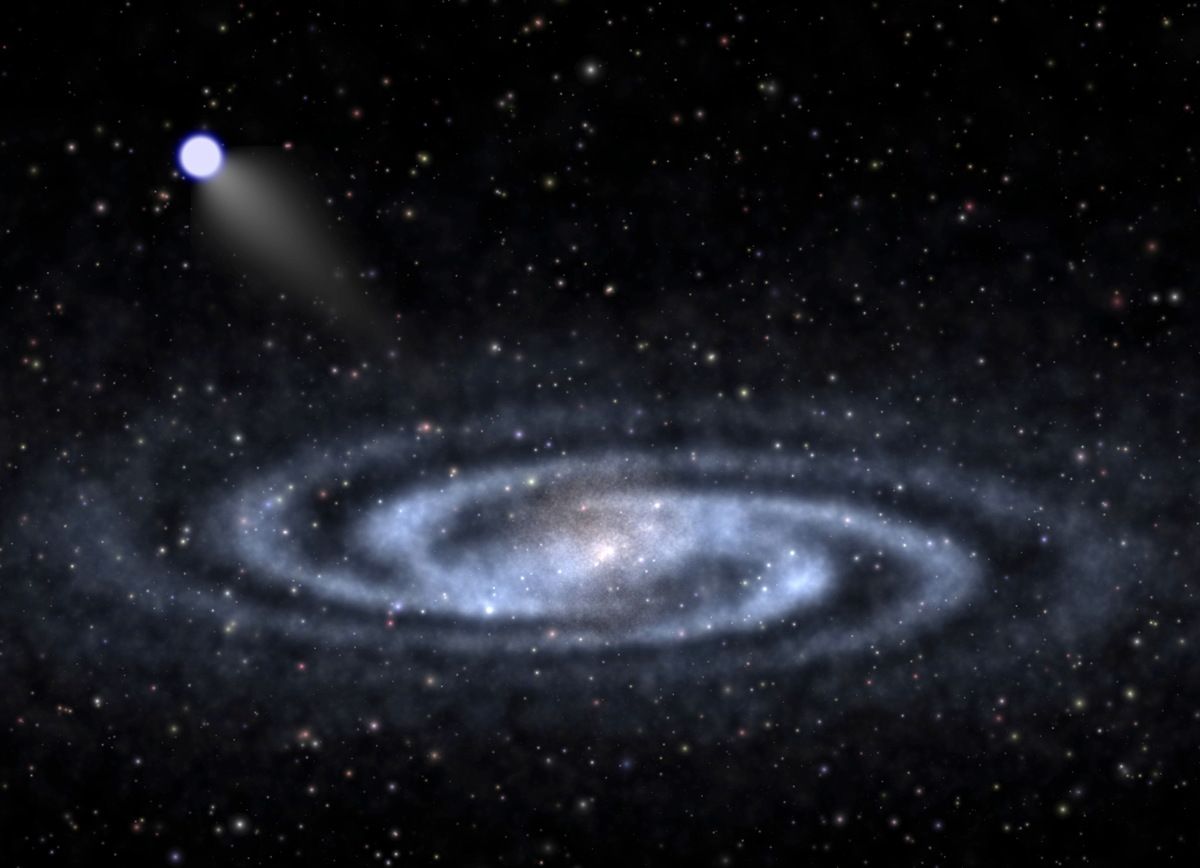CWISE J1249 is the first known brown dwarf-like object to leave the Milky Way.
Key Takeaways
- A hypervelocity object, moving at 1 million MPH, is escaping the Milky Way.
- Citizen scientists discovered CWISE J1249, a rare, fast-moving object using NASA’s WISE data.
- CWISE J1249 is unique, possibly a low-mass star or brown dwarf with low metallicity.
- The object might have been ejected from a supernova or a globular cluster interaction.
- The discovery is a collaborative achievement involving volunteers, professionals, and students.
_______________________________
While stars typically follow predictable paths around the Milky Way, a groundbreaking discovery revealed a hypervelocity object, CWISE J124909.08+362116.0, speeding out of the galaxy at nearly 1 million miles per hour. This remarkable find, credited to NASA’s Backyard Worlds: Planet 9 citizen science project, marks the first time an object of such low mass, possibly a brown dwarf or small star, has been observed breaking free from the galaxy’s gravitational pull.
Using data from NASA’s WISE (Wide-field Infrared Survey Explorer) mission, citizen scientists identified the faint, fast-moving object. Initial observations from 2009-2011, followed by confirmations using ground-based telescopes, led to this discovery. The study, now published in the Astrophysical Journal Letters, underscores the power of citizen science in advancing astronomical research.
The Unique Nature of CWISE J1249
CWISE J1249 stands out not just for its velocity but also its unusual composition. Data from the W. M. Keck Observatory in Hawaii indicate that the object contains significantly lower levels of iron and other metals compared to typical stars or brown dwarfs. This suggests it could be one of the galaxy’s earliest stars, offering a glimpse into the Milky Way’s ancient history.
Scientists remain intrigued by the object’s origin and extraordinary speed. One theory suggests it was part of a binary system with a white dwarf, which exploded as a supernova, ejecting CWISE J1249. Another possibility involves its ejection from a globular cluster after a close encounter with black holes. Such interactions demonstrate the intricate gravitational dynamics at play in the universe.

Collaborative Efforts in Astronomy
The discovery of CWISE J1249 exemplifies the collaborative spirit of modern astronomy. Citizen scientists like Martin Kabatnik, Thomas P. Bickle, and Dan Caselden played pivotal roles, alongside professionals and students such as Adam Burgasser, the study’s lead author, and his colleagues at the University of California, San Diego. Volunteers have also discovered over 4,000 ordinary brown dwarfs through the Backyard Worlds project, showcasing their significant contributions to astrophysics.
The findings not only highlight the potential for future citizen science breakthroughs but also deepen our understanding of the galaxy’s dynamic environment. As scientists analyze CWISE J1249 further, its story may offer critical insights into the forces shaping our universe.




